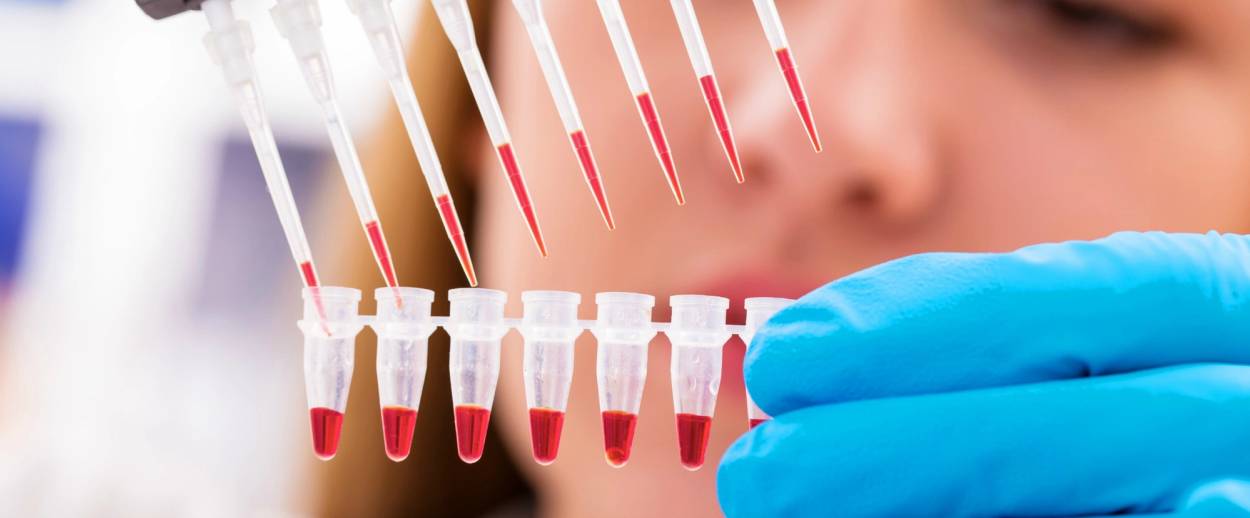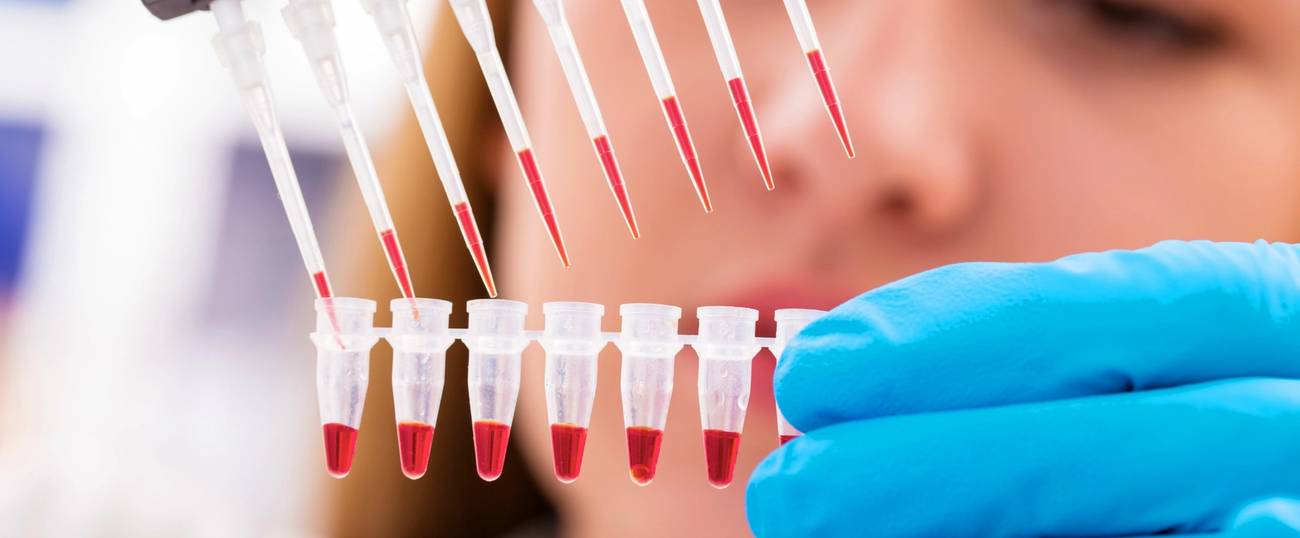Blessing My Husband’s Stem Cells
What an innovative lifesaving treatment taught me about life, time, and religion




When the nurse asked Roy if he wanted to have his stem cells blessed by a chaplain, we laughed it off, even though the nurse, who dealt with stem cell transplants on a daily basis, looked puzzled about what we might be laughing about. She asked again a few hours later if we wanted a blessing, and then about a half hour before the infusion was going to happen, she became more urgent. If we were to get the chaplain to be there before the cells arrived, we would have to notify him now. This time Roy and I, two non-observant Jews, more politely said no. But as the moment hovered closer, as the nurse appeared in Roy’s room with the bag of light-colored red liquid and hooked it up to the apparatus, I began to understand the reason for a blessing. It was the same sack of stem cells we had last seen four and half years ago, when he had ‘harvested’ them after his initial treatment, the same cells that had been put into deep freeze to be used in the potential future, that were now to be infused into Roy’s blood stream. I had marveled at the pale blood color of the cells when I’d last seen them after the harvest—the retrieval that had happened by running all of Roy’s blood several times out and back into his body through a centrifugal machine, a process that had been a marvel in itself—and now again the pale color was captivating. The cells in the bag were literally Roy’s life’s blood.
The nurse manipulated the machine so that the drips would start off very slowly. We watched the first trickles go down the plastic tube and pass into in larger intermediate cylinder and then into the longer tube that went into the vein in Roy’s neck. It was through that same tube that all the chemo and saline solution, and anti-nausea medication had been infused into Roy over the past two days in preparation for the stem cell transplant. The chemo was intended to kill all the old blood cells that had some amount of cancer in them (as well as those that didn’t), cells that were to be replaced by the new ones that would grow from the stem cells being infused. I watched the color and expression of Roy’s face to detect any immediate changes. And the nurse watched, too, to be certain, she later told us, that Roy was tolerating the cells – the very ones he had previously produced from his own body—as he received them, so she could then turn up the speed of the flow. As the cells spilled from the plastic bag, through the tube and into Roy, his face and body began to take on a rosy glow. It could have been the cells themselves changing his color or the flush of fever that we were told sometimes accompanies the infusion of stem cells, but there was little doubt that what we were witnessing was a miracle, or at least a vision. Within 20 minutes the plastic bag hanging at the top of the metal pole had emptied. The last remaining bit of pale blood in the intervening tube dripped into Roy’s bloodstream. The nurse was pleased. She told us that Roy had made excellent time in receiving his cells, that in fact there were still 12 minutes remaining on the time limit imposed for the cell entry. After that, she only then explained, the cells would have exceeded the deadline for exposure from the deep freeze and they would have no longer been usable. Little had we known that Roy had received this new dose of life against the clock.
What would now follow, we were told by the nurses, would be the count of 14 days more. There was a chart on the wall marking the dates—each with boxes to be filled in, noting the number of white blood cells, the reds, and the platelets. The counts would show the decline of the blood cells, followed by the growth as each day passed. In a process that seemed impossible in its progression, we would find ourselves cheering for Roy’s blood count to go down to zero, and considered it a wondrous success when the white cells hit a low of 0.03 for two full days. When the blood counts then began to go up, we would again cheer as the new marrow was created. Once Roy’s blood was strong enough, it would be time to leave the hospital and recuperate slowly at home.
Yet Roy’s very bodily instincts would contradict what we intuitively felt life needed to be. The nurses and I begged Roy to drink water and eat a small bit of food, so that he could be sustained without being attached to the hospital apparatus, so that we could leave and he could recover. But his body refused. Even the trifling ability to suck on a piece of candy, or ingest a couple of sips of energy drink mixed with ice that he had managed in his first days in the hospital, seemed to have been obliterated. In those harrowing last days in the hospital, even as the stem cells continued to grow and we clamored for Roy to leave, at the same time we dreaded and feared what it would mean to be away from the protection of ingestion tubes and nurses. But eventually, Roy would leave, and we would go home, and he would forego uncooked fruits and vegetables, and rare meat and fish, and alcohol for the prescribed 30 days. He would spend the coming months living life slowly and reclusively, and slowly he would again eat and drink as he had done before, and go to the gym. And time would continue to pass and we would continue to live our lives.
The way the doctor had explained it to us, when he first told us what a stem cell transplant could do for Roy, was that it would “turn back the clock.” At the time, I understood that to be an expression, something that I repeated to all the many people who asked what a stem cell transplant was exactly. I explained that it would give Roy more time, time to live, and time for new research and new medicines to develop. But once the transplant had actually happened, I understood the doctor’s words in a different way, to be exactly as he had stated them. “Turn back the clock” literally meant a reversal of time—a whole other way to consider life. We were no longer racing to fit in as much as life could hold, but letting go of our conception of the order of time entirely, to consent to life for what it is.
I don’t think of myself as religious, and even less so does Roy. But the essence of timelessness that is at the center of the great religions—the tests of faith, the fasting, the visiting of plagues, the sealing in the Book of Life—it now all rises to the surface. As the high holidays approach this year, as we come to the end of the reading of the Torah, and circle back again and begin to read at the beginning, I will know that while a chaplain may not have witnessed it, those stem cells have been blessed.
Anne Edelstein’s memoir, Lifesaving for Beginners, will be published in November by Red Hen Press.